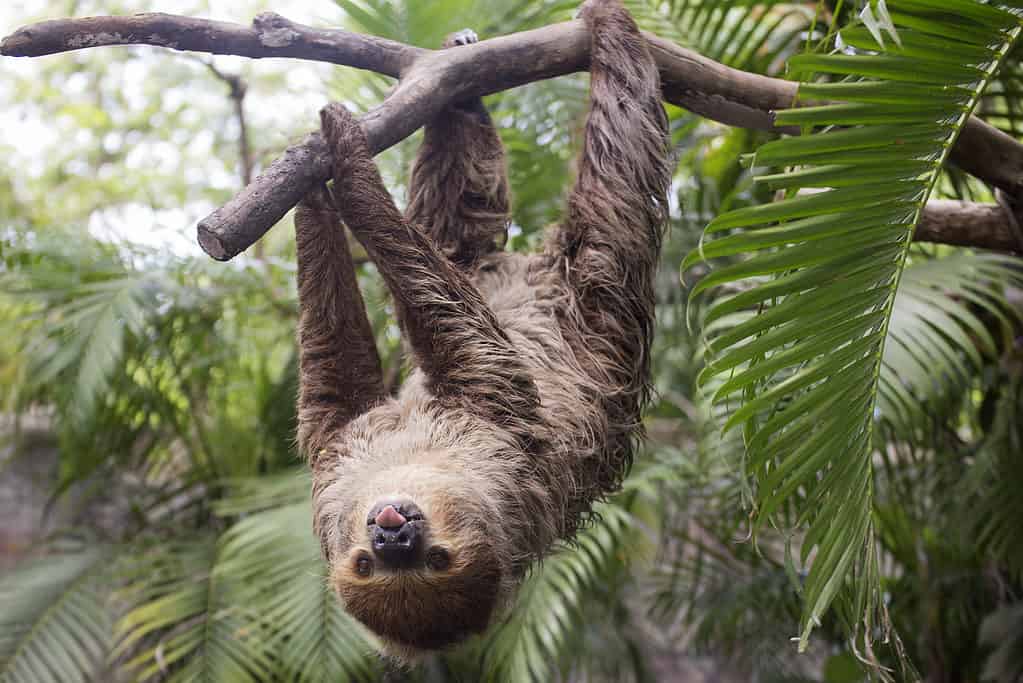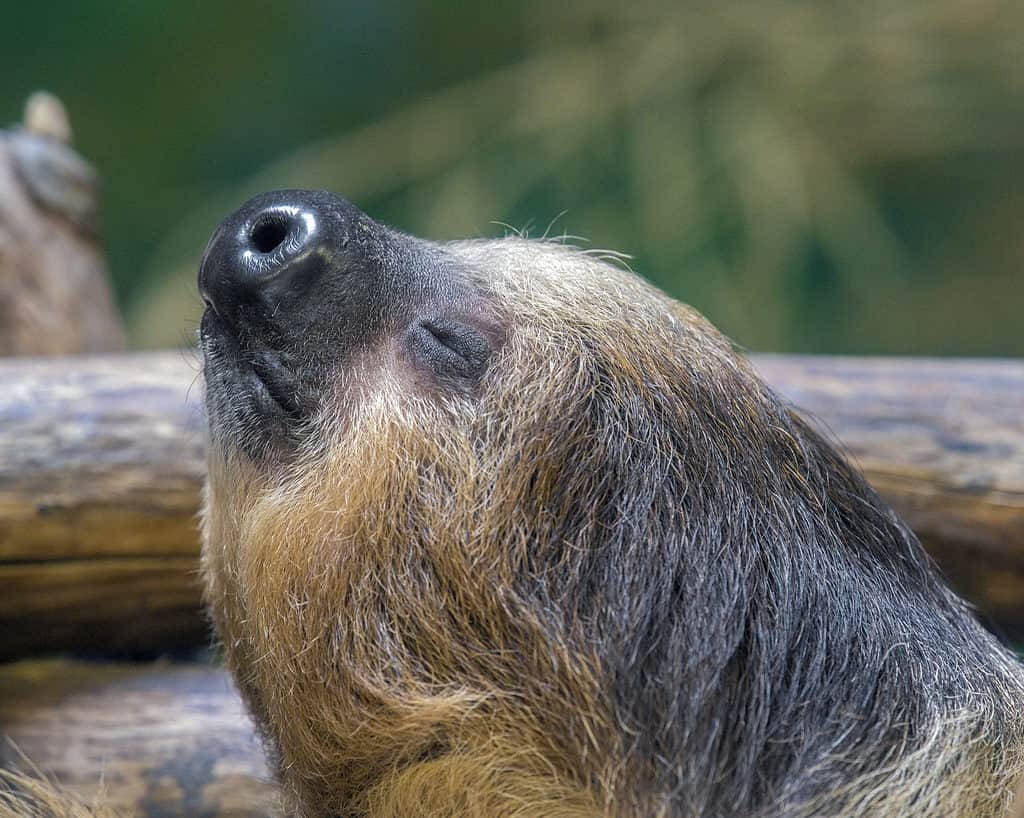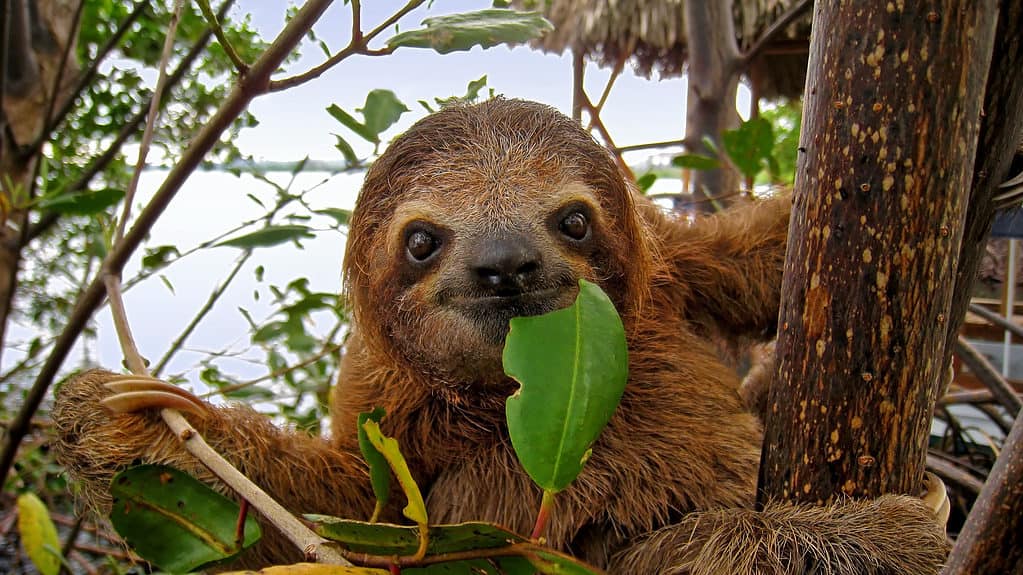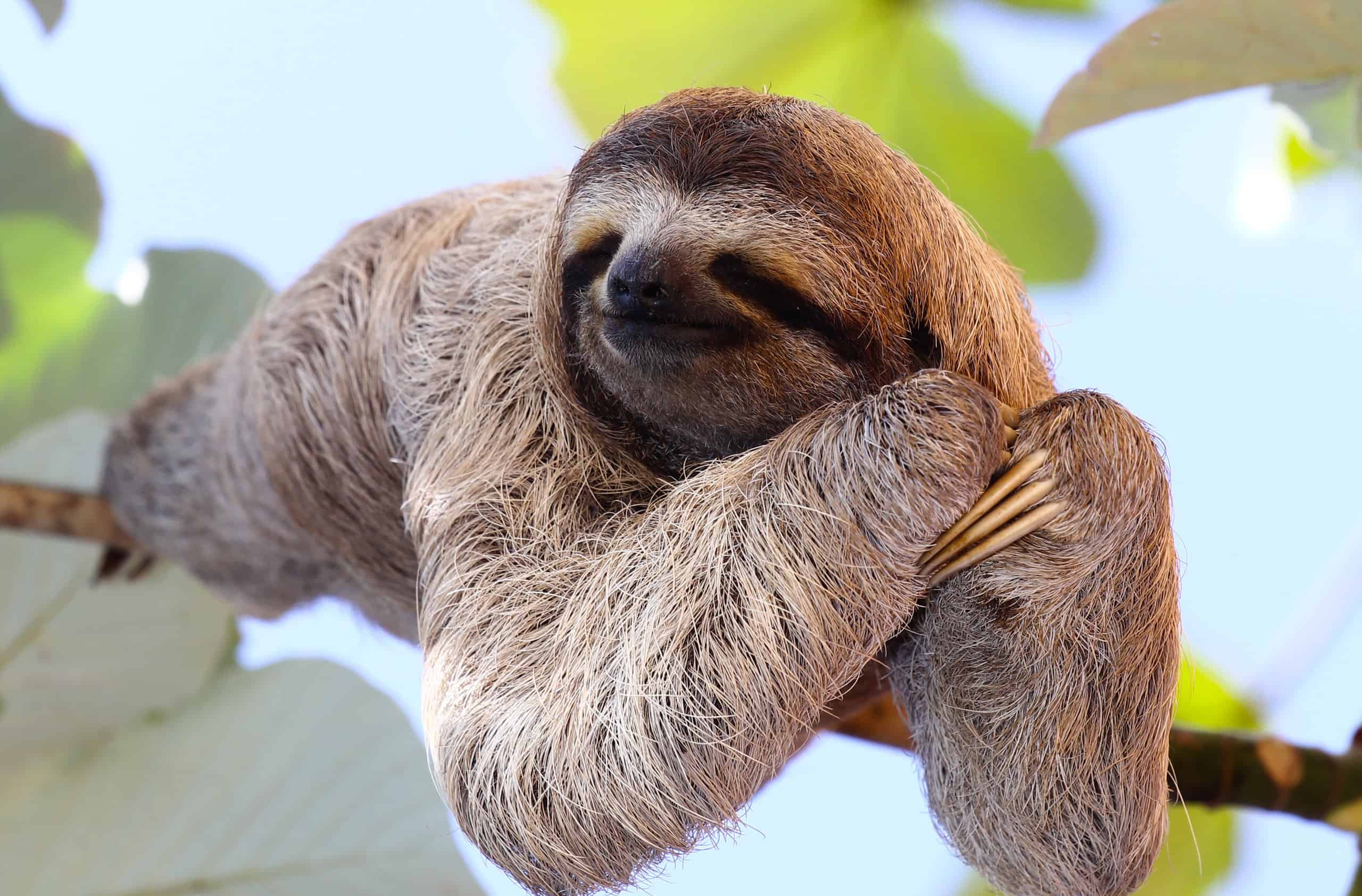How long can you hold your breath? Most humans can only hold their breath for about one to two minutes, with records of up to 11 and 34 seconds. Other mammals, primarily based on necessity, can hold their breath for much longer. We know that the most impressive mammal to be able to hold its breath underwater is the whale. A variety of whales have impressive records for breath-holding. The Cuvier’s beaked whale (Ziphius cavirostris), for example, can hold its breath for up to three hours and 42 minutes. The sperm whale has an impressive record of two hours. A more unlikely animal to have a remarkable lung capacity is the sloth. Sloths are slow-moving animals that are native to Central and South America.
Today, we will check out how long sloths can hold their breath and how this compares to other mammals and animals. So, how long can sloths hold their breath? Let’s find out!
How Long Can Sloths Hold Their Breath?

Sloths can hold their breath for longer than any other land mammals.
©iStock.com/Kung_Mangkorn
Sloths can hold their breath for up to 40 whole minutes. That’s 20-40 times the length the average human can safely hold their breath. This incredibly impressive amount of time is assisted by the sloth’s ability to slow its heart rate to only one-third of its average speed. Now, it’s important to note that 40 minutes is the extreme length that sloths hold their breath and that the average amount of time they’ll practice this breath control is closer to 20 minutes. That’s still a whole lot of time not to breathe!
This skill is essential for swimming but has another key benefit for sloths. The slow and meaty sloth is an excellent bite for many predators and isn’t very efficient at fleeing an attack. That means it has to develop other means of survival. One of these methods is holding as still as possible or hiding underwater. Both of these tactics require a sloth to be able to hold its breath for quite a while.
The Science Behind It

Sloths have special lungs that help them hold their breath for much longer than average mammals.
©iStock.com/Christopher R Mazza
We’ve mentioned how a sloth can slow its heart rate by about two-thirds. However, this is not the only way sloths excel at holding their breaths. First, sloths have very slow metabolic rates. This means that a sloth processes its food into calories very slowly. This may not seem like a factor related to a sloth’s ability to hold its breath, but consider this: You do not have to breathe as fast if you do not have to circulate your blood or other bodily fluids as quickly to digest your food. You also utilize fewer calories – a reason why sloths move so slowly. Think about your daily activities. You breathe faster, and your heart rate speeds up when you move faster, right? This is the same idea. Since sloths do not move as fast or digest quickly, they do not need to breathe as fast.
Another great way that sloths can hold their breath is through their distinct lung structure. Most mammals have lungs that are attached firmly to their ribcage. Sloths, however, have loosely-attached lungs. Loosely-attached lungs allow the sloth to compress the lungs more easily – especially when submerged in water. Sloths also have extra-large lungs that are divided into numerous small lobes. This more complex lung system allows a more versatile breathing experience with significantly enhanced breath control. They also have evolved hemoglobin and myoglobin proteins in their blood and muscles, which help to store oxygen in their systems. These combined factors make the sloth the king of land mammals regarding breath-holding.
How Slowly Do Sloths Breathe?
A sloth can breathe as slowly as six to eight breaths per minute. According to the National Institutes of Health, sloth ventilation ranges from as little as six breaths per minute to as much as 108 breaths per minute. Of course, the high breath rate was observed in non-native conditions – particularly laboratory observations. Sloths breathe at an average of 27 breaths per minute. Sloths are also passive breathers. Most mammals have active muscles that work to assist their breathing. Sloths, however, execute breathing by their bodily movements. Stretching, climbing, and moving around help sloths breathe more than muscles.
Sloths utilize their oxygen more efficiently than most animals and have several adaptations for climbing, resting, and diving. It’s also important to note that sloths breathe more slowly in cooler temperatures. This is because sloths have a naturally low body temperature that requires a lot of care to maintain. By slowing their breathing, they can store energy and warmth that helps them stay relatively thermoregulated.
Are Sloths Good Swimmers?

The three-toed sloth (
Bradypus tridactylus) takes a dip in some murky water.
©Michel VIARD/iStock via Getty Images
Sloths are, somewhat surprisingly, quite impressive swimmers and can move three times faster in water than on land. That isn’t to say that they are fast swimmers. A sloth can move at a pace of up to half a mile per hour in water. That’s about 44 feet per minute. In contrast, humans swim an average of about two miles per hour or 176 feet per minute. The longest river in the United States, the Missouri River, has a maximum width of 13 miles. That means it would take a sloth 26 hours to swim across it, while it would only take a human 6.5 hours to traverse the same distance. If we’re speaking in terms of maximum speeds, the fastest swimmers can travel at 5.5 to six miles per hour in water unassisted. That means it would only take a few hours for humans to swim consistently at their fastest speed to make the same voyage.
Why do sloths need to be good swimmers? Moving so slowly, once again, puts them at a high risk of predation. They need to move as effectively as possible when they come down from their tree-top perches (or hangs, as it were). When they descend from their trees, they must safely traverse the ground for food or a new resting place. One of the safest ways across a tropical region is through water, which is also helpful because they can hydrate while they make their way to where they’re going.
Other Fun Facts About Sloths

Baby Brown-throated Three-toed sloth in the mangrove, Caribbean, Costa Rica.
©Damsea/Shutterstock.com
Our slow friends have many interesting characteristics you may not yet know about. For example, sloths are mostly folivores, which differ from herbivores because it is the act of feeding only on foliage. This includes the leaves, sap, and fruits of many different trees. We can return to a previous section as we note that the sloth’s metabolism is prolonged. Sloths don’t have to eat much food daily because their stomachs are frequently already full – accounting for up to 37 percent of their entire body mass. Due to the slow metabolic rate of sloths, it will take a very long time for most of these meals to be digested. Now, let’s look at other fun facts about sloths.
- Sloths only poop once a week. This process is arduous, as sloths are fussy about defecating when and where.
- Sloths live an average of 20-30 years. However, we cannot be sure of this lifespan because they are so difficult to study in the wild. Most of our information comes from sloths in captivity and investigations on deceased sloth bodies.
- Sloths have been around for about 65.5 million years.
- Sloths hang motionless for 15-20 hours every day.
- Sloth fur is home to several organisms, including fungi, algae, and insects.
- Sloths can fall up to 100 feet without injury.
- Sloths fall out of a tree an average of once a week for their entire lives.
- Sloths can starve to death on a full stomach. Since sloths cannot naturally thermoregulate, low body temperatures cause the sloths to stop processing and digesting the food already contained in their guts.
Thank you for reading! Have some feedback for us? Contact the AZ Animals editorial team.








